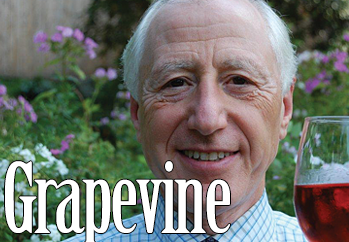Streaming ‘Widow Clicquot’ and Remembering the Champagne Region
Opinion Advocates for ideas and draws conclusions based on the author/producer’s interpretation of facts and data.
 Last weekend my wife and I streamed a movie recommended by our friends, the Gordons. “Widow Clicquot” is the story, told in a rather intimate style, of one of the women pioneers in the Champagne region of France.
Last weekend my wife and I streamed a movie recommended by our friends, the Gordons. “Widow Clicquot” is the story, told in a rather intimate style, of one of the women pioneers in the Champagne region of France.
The presentation of on-location cinematography, period geopolitics and groundbreaking winemaking techniques drew me in to the unique storyline. The widow and the 1800s band of other young French women winemakers, including their influence on the sparkling wine industry, even into the 21st century, have always mesmerized me.
The Champagne region has been fertile ground for women to attain and retain control over wineries. Many inherited wineries from their husbands, stepping up to the helm by circumventing the male-biased hierarchy that dominated the region. Through their operational, marketing and financial expertise, they catapulted the Champagne houses of Veuve Clicquot, Pommery, Laurent-Perrier and Bollinger into world prominence that continues to this day.
I have previously written about the widow and her compatriots. This week, I’ve decided to reprise that column, in part, to refresh the ordeals and impact of the women of that time.
This week’s column is part three of a multipart series on my recent trip to the French wine regions of Champagne, Loire and Burgundy.
Our first stop: The Champagne region, in close proximity to the cultural and romantic allure of Paris. Champagne, the wine, is a favorite of each traveler in our party.
Our destination was the subregion of Reims, a 45-minute ride from the Paris airport on the TGV fast-train. Nearly the entire area of Reims sits above excavated chalk-based Champagne cellars. Many of the buildings, including the colossal Notre Dame Cathedral, were built from these ancient quarries. After meandering through the ancient capital city of the same name, we enjoyed extravagant meals at Michelin-starred Les Crayéres and Le Millénaire restaurants.
Our private appointment was at the Veuve Clicquot winery. Founded in 1772 by Philippe Clicquot, managed by his son François, and succeeded by François’ 27-year-old widow (veuve) in 1805, this house has built a reputation of success – and criticism.
Veuve Clicquot production is supported by more than 1,200 acres of winery-owned vineyards (which provides one-third of the fermented grape juice used in production), supplemented by purchases of varying quantities from nearly 1,200 nearby growers/farmers. This is a big Champagne house; it produces over one million cases a year.
But producing Champagne is an expensive proposition. When we met with Cyril Brun, one of the 10 winemakers, one of his first comments was “Champagne is a combination of technique and capital.” The capital component is created by the high cost to produce, age and blend grapes in expensive facilities over a number of years. Smaller growers/farmers cannot afford this level of investment. It also leads to a “house style” at each major winery that refers to the consistent profile of aroma, flavor, acidity and tannin year in and year out. Give the market what they want and they will return for more.
Our visit began with a tour of a portion of the 16 miles of chalk-based cellars (crayéres) dug out by the ancient Romans and succeeding residents.
After meeting Brun in the tasting amphitheater, we were treated to an experiment in the blending of the house style. He explained that each year hundreds of barrels of multi-vintage, multi-varietal, multi-vineyard wines are exactingly evaluated for up to two months before the house style is achieved.
Brun then provided us with several still wines that we blended on our own to create our own Champagne style. We all agreed that achieving a pleasing blend is not an easy task.
Our tour and tasting completed, we drove past acres of near-ripe, maturing vineyards for our TGV train ride back to Paris for five glorious days of sightseeing and gustatory extravaganza.
Next stop: The Loire Valley.
Nick Antonaccio is a 45-year Pleasantville resident. For over 25 years, he has conducted wine tastings and lectures. Nick is a member and program director of the Wine Media Guild of wine journalists. He also offers personalized wine tastings. Nick’s credo: continuous experimenting results in instinctive behavior. You can reach him at nantonaccio@theexaminernews.com.
